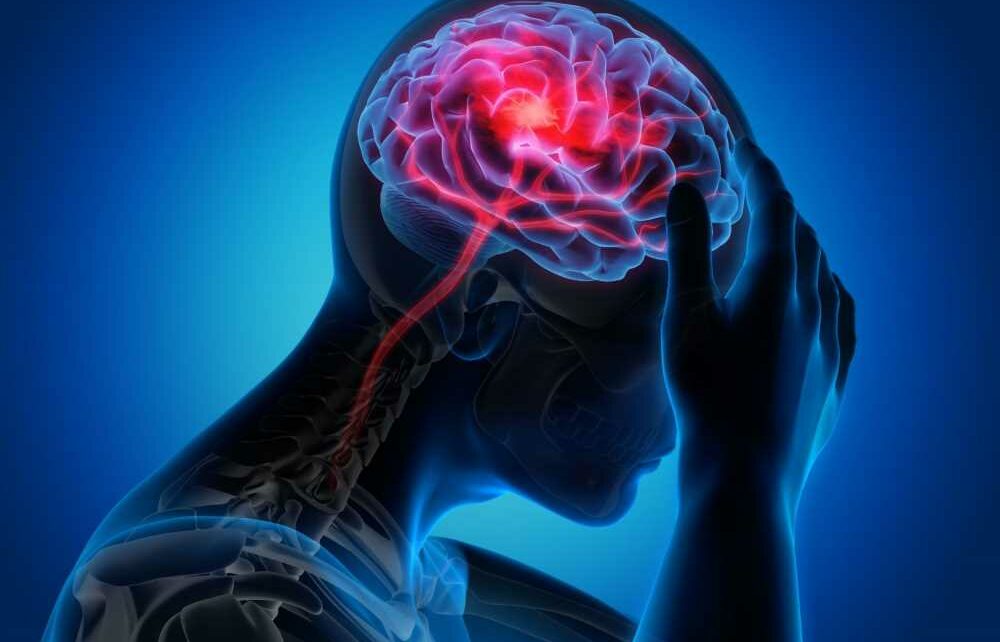THERE are a few key signs of a stroke most of us know to watch out for – a droopy face, slurred speech, weakness in one side of the body.
But did you know that loss of vision – aka an eye stroke – could indicate you're at risk of the condition too?
The most common form of stroke occurs when a blood clot prevents the flow of blood and oxygen to the brain.
An eye stroke occurs due to lack of blood flow to your optic nerve.
Each of your eyes has an optic nerve that connects to your brain, which carries visual information from your retina (a light
sensitive area at the back of the eye that helps capture the image of what you're seeing) to the occipital cortex area of our brain.
That region interprets the image into what we recognise as sight.
Read more on strokes
What causes a stroke and what are the main symptoms to look out for?
Warning to anyone suffering with depression over risk of deadly complication
"People with eye stroke are usually given little warning," Penn Medicine warned.
Most people will notice loss of vision in one eye when waking up in the morning, but they won't have any pain.
You could experience a dark area or shadow in the upper or lower half of your visual field.
Other symptoms you might notice are sensitivity to light or you might be less able to see contrast.
Most read in Health
I'm a nutritionist – the 6 warning signs that you need to cut back on sugar
Exact time you need to fall asleep to avoid raising risk of dementia
Urgent warning to parents about death risk of co-sleeping with babies
Girl who beat cancer after docs reattached leg backwards starts running again
Am I at risk for eye stroke?
You're more likely to have an eye stroke if you're middle aged or elderly – only 10 per cent of people affected are under 45, according to Penn Medicine.
Having cardiovascular disease could increase your risk of the condition.
"In some patients with cardiovascular disease, blood pressure falls markedly while sleeping.
"This low blood pressure reduces circulation through those arteries, increasing the chance of eye stroke," Penn Medicine explained.
Certain optic disc shapes can also play a part.
The risk of having an eye stroke is higher if your optic foramen is smaller than average – nerve fibres enter the eye through this hole when travelling to the brain and down the optic nerve.
A smaller optic foramen will mean the nerves get crowded, upping the risk of an eye stroke, Penn Medicine said.
“Although the relationship is not well understood, people who had significant cardiovascular disease and also take the drug Viagra are more at risk for the disease,” the health body added.
According to Moorfields Eye Hospital, the following conditions might make the condition more likely:
- High blood pressure
- High cholesterol
- Glaucoma
- Diabetes
- Smoking
- Certain rare blood disorders
What should I do if I have an eye stroke?
In its most severe form, an eye stroke can lead to complete blindness in your eye.
But in some cases, there’s only a temporary blockage to your optic nerve and your vision returns quickly.
This is often described as a ‘mini-stroke’, Dr Pearse Keane – a consultant ophthalmic surgeon at Moorfields Eye Hospital – told the British Heart Foundation.
He urged anyone experiencing sudden loss in vision to see an expert urgently, either through an optometrist or A&E.
"If an eye stroke is diagnosed within four hours of it happening, it may be possible to dislodge the clot by massaging the eye and giving medications to lower the pressure in the eye," Dr Keane wrote.
"Unfortunately, most patients don’t get specialist help for 24 hours or more, which is too late for treatment.
"Even if your vision can’t be restored, always seek medical advice after an eye stroke, as you are at increased risk of a stroke in your brain."
What are the 4 symptoms of stroke you must know?
You can use the FAST method – which stands for Face, Arms, Speech, Time – to identify is someone is having a stroke:
F = Face drooping – if one side of a person's face is dropped or numb then ask them to smile, if it's uneven, you should seek medical help.
A = Arm weakness – if one arm is weak or numb then you should ask the person to raise both arms. If one arm drifts downwards, it could signify stroke
S = Speech difficulty – if a person's speech is slurred this could be a sign of a stroke
T = Time to call 999 – if a person has the signs above then you need to call 999
Other stroke symptoms include:
- sudden weakness or numbness on one side of the body
- difficulty finding words
- sudden blurred vision or loss of sight
- sudden confusion, dizziness or unsteadiness
- a sudden and severe headache
- difficulty understanding what others are saying
- difficulty swallowing
Ischaemic stroke, the most common form of the condition, occurs when a blood clot prevents the flow of blood and oxygen to the brain.
This is typically caused by arteries becoming narrower over time
Stroke Association estimates that roughly 100,000 Brits have strokes every year – the UK has 1.3 million stroke survivors.
According to the NHS, these factors can dangerously speed up your risk of a stroke as they can narrow your arteries:
- smoking
- high blood pressure (hypertension)
- obesity
- high cholesterol levels
- diabetes
- excessive alcohol intake
You might also be at risk of stroke if you a type of irregular heartbeat called atrial fibrillation.
Studies have shown that people who suffer from depression might be at higher risk of a stroke – and could face slower recovery times.
Read More on The Sun
I did weekly shop at M&S and found 14 items cheaper or same price as Aldi & Lidl
I transformed my council house kitchen with cheap buys from Wilko & B&M…it’s so posh
Scientists have also revealed that your blood type could predict your risk of the condition.
And experts in the US found that catching shingles leaves people with an elevated risk of stroke for up to a year after infection.
Source: Read Full Article











